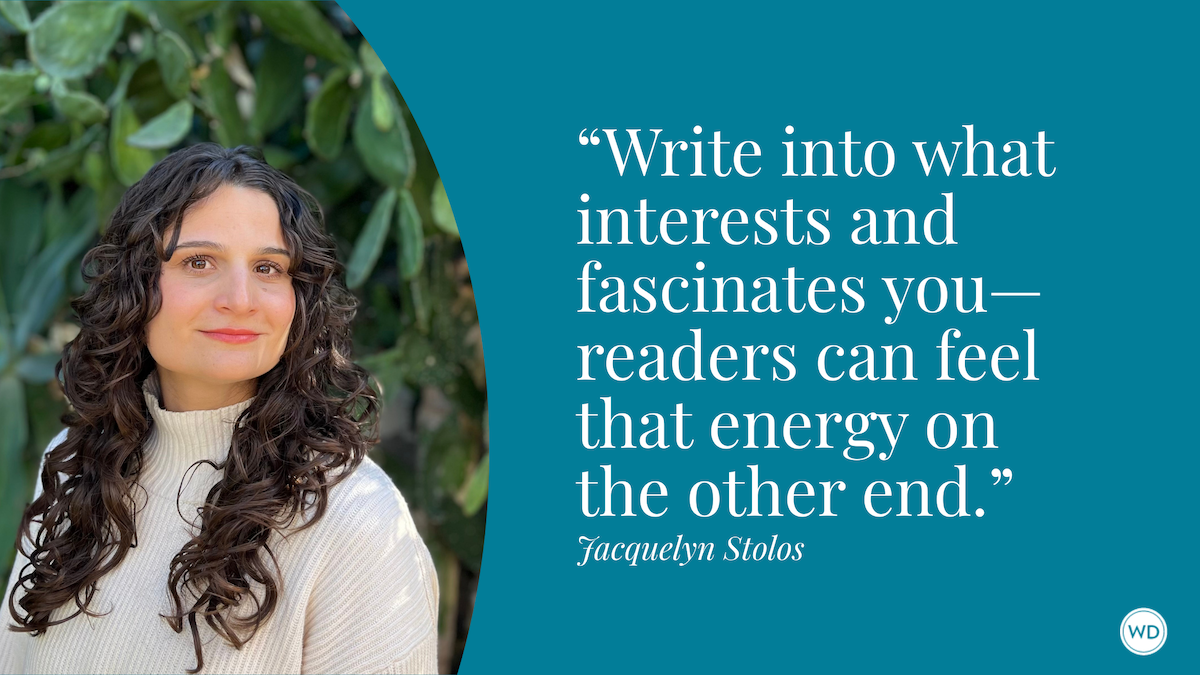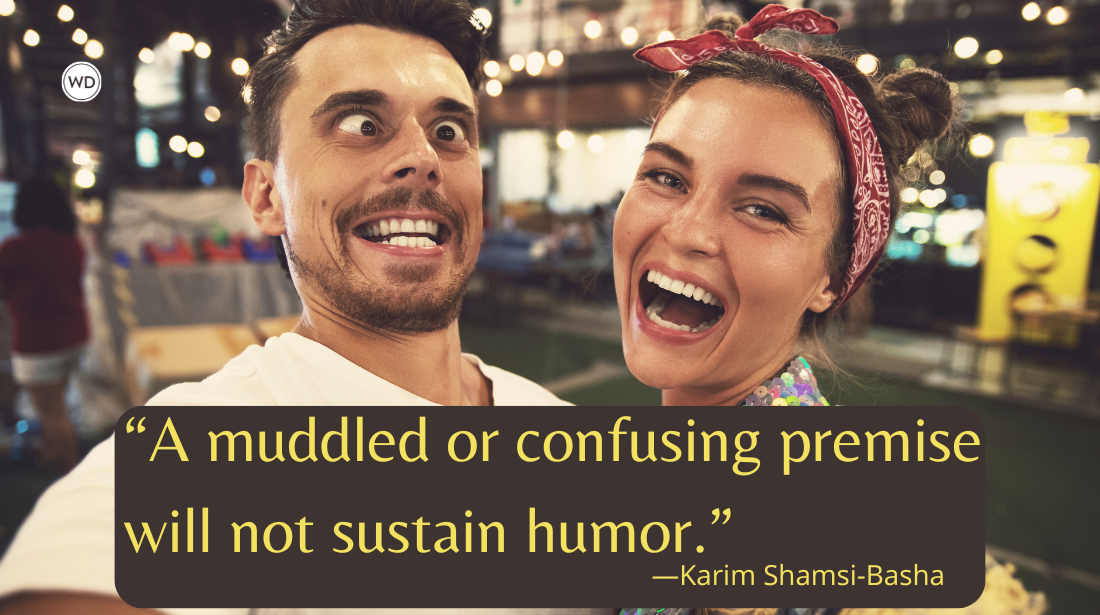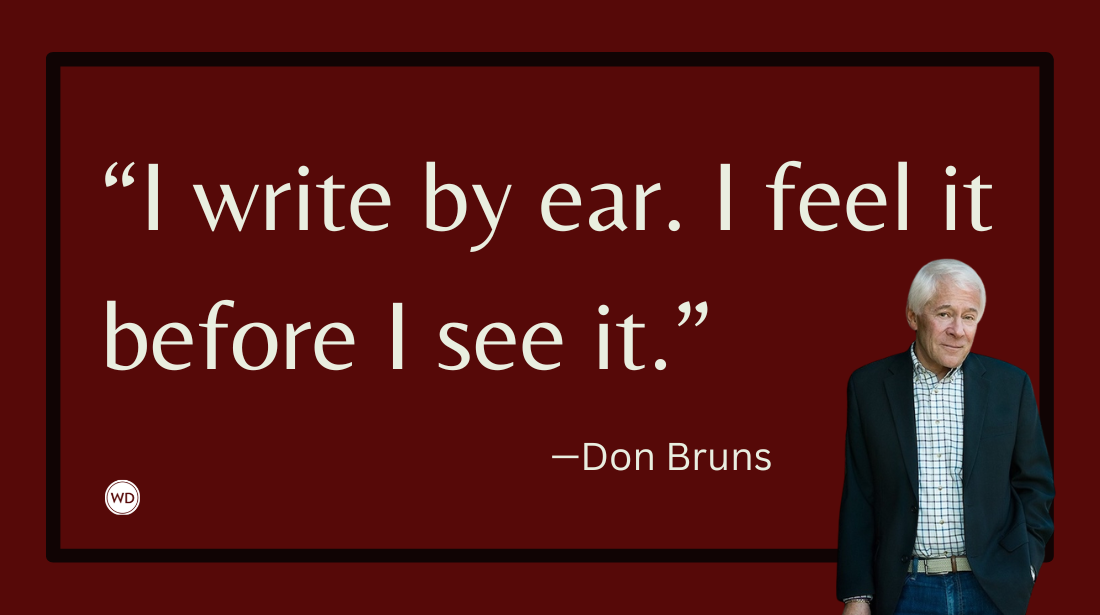Train Your Eye for Better Writing: 3 Writing Techniques Adapted from the Visual Arts
Three writing techniques from traditional visual arts training that can help you find a deeper, truer, and more vivid writing voice.
Add color to the canvas of your manuscript with these 3 writing techniques adapted from practices commonly used by painters, and other visual artists.
You can’t learn to paint by looking at a Picasso any more than you can learn the cello by listening to Yo-Yo Ma, yet writers are expected to know their craft by virtue of having read books. Reading is of course crucial—just as looking is for the painter and listening for the cellist—but what artists, musicians and even athletes know about training for their field is often lost on writers.
Although I’ve learned much from the Master of Fine Arts program, workshops and conferences I’ve attended, I’ve also noticed they often focus more on the don’ts of writing than the dos. The person who unwittingly taught me the most about crafting my first novel was my painting teacher, the artist Roy Kinzer. With a nod to his influence, here are three techniques from traditional visual arts training that can help you find a deeper, truer and more vivid writing voice.
1. Emulation
Painters often learn their craft by copying master works. Try creating a replica of a Cézanne or a Matisse and you’ll see how humbling it is. This method teaches the apprentice artist things about composition and brushstroke that she could never have internalized otherwise. Once the painter does this with 20 or 30 artists, she starts to get some serious tools in her toolbox.
So it can be with writing. I encourage my students to read deeply a broad range of writers, and after each one, try writing a few sentences in that wordsmith’s style. For example, take a signature line from William Faulkner or Elizabeth Bishop and, while keeping the sentence structure intact, pluck out all of the nouns and verbs and replace them with your own. Do this with the master writers you most envy, as well as those to which you have the greatest aversion. You might learn even more from the styles you think you hate.
Don’t place these emulated lines directly into your own writing. That would be like taking a Frida Kahlo self-portrait, changing the color of her hair, and calling it your own. Instead, the idea is to practice emulating lines so that the many different styles can work their way into your brain, spin around in the blender of your subconscious, and serve to inform your own unique voice.
No art form exists in a vacuum. The impressionists were friends and rivals who hung around in the same cafés, shared, traded and borrowed, and pushed one another forward. Dancers learn from dancers. New musical genres develop because artists keep responding to one another.
The excellent book Reading Like a Writer by Francine Prose helps readers pull aside the curtain to notice what the author-magician is doing, to isolate how each one manages gesture, dialogue and character development, and to learn from others’ strengths and weaknesses.
As readers, the most important thing to notice is often what we don’t notice—that is, how the writer keeps us immersed in what John Gardnerin The Art of Fiction famously called “the uninterrupted fictional dream.” When we fall into that blissful dream as readers, it appears seamless on the part of the author. It’s not, of course. Emulation can help reveal the skills that keep the movie projector running.
2. Frequent Small Sketches
Figure drawing classes often start with timed gesture drawings of initial poses lasting as short as five seconds before the model moves. Gradually the time increases to 10, 15 and 30 seconds. By the time you get to a minute, it feels as if you have all day to capture the pose on your sketch pad. The idea is to keep you free, dexterous and more focused on process than product. Such short bursts also keep you from taking yourself too seriously—otherwise, you’d quickly become frustrated.
I start my creative writing classes with my own variation of this technique. We pass around small objects: a thimble, a pair of eyeglasses, a pinecone. You touch the object and have a few seconds to write about it—sensory details, associations or memories—before you must pass it to the next person and receive a new object. Students groan and laugh at the daunting exercise, but it has the effect of cultivating soil in a garden.
You don’t have to be in a class to take up this practice with a sketchbook. At odd moments throughout the day, in a diner or in transit, jot down gestures, expressions or snatches of overheard dialogue. The transitory nature of these observations will create their own time constraints. Whether or not these little moments make it into whatever story you’re writing, they will deepen your awareness of the range of human expressions, inflections and gaits.
In her inspiring book Writing Down the Bones, Natalie Goldberg refers to writers’ journals as “compost piles” where ideas can sink down into the subconscious, heat up and combust over time. Most visual artists don’t start on a big canvas without doing countless thumbnail sketches that help sharpen their skills and drive their vision. Writers can benefit from the same.
3. Underpaintings
Traditional landscape and portrait artists often begin with a monotone underpainting using sepia or cool tones. Essentially a base layer, this has two benefits: First, it allows the artist to play with the composition rapidly in broad strokes before committing to a particular layout. It also forces him to put aside the issue of color and see the image in terms of dark and light planes. The artist frames out the house before putting up walls. Once he begins applying color, he does so with a solid understanding of the image’s layers and dimensions.
What I’m suggesting here is not outlining, which comes from the rational brain and works for some writers, but rather quick, loose first drafts that spring from the subconscious like dreams and proceed image by image. The novel I am currently working on began with a 20-page broad stroke of the full story, and grew to 500 pages not in linear fashion, but mushroomlike, from the inside out. To write this way means you must be working the whole canvas at once, relating one image to another across distances. To get stuck in one corner of the canvas risks losing the thread that connects it to the whole living organism of the story.
Just as painters must keep the brush moving, relating one color to another, writers must work threads back and forth so that their patterns of imagery relate and work together across the scope of many pages. Keep looking at your recurring images and notice how they change each time they surface so that they are never doing the same work twice, always moving the story forward.
For example, notice the grandmother’s hat in Flannery O’Connor’s classic short story “A Good Man Is Hard to Find.” The hat is incidental to the plot but central to the characterization. Each time it appears, it points to a shift. A writer cannot achieve that sort of resonance on a minor note without constantly working the whole piece at once. I don’t know if O’Connor started with what she would call an underpainting, but I would be willing to bet she began with a single image that exploded in all directions.
To write this way, swift and spry, means giving ourselves permission to create what Anne Lamott in Bird by Bird calls “shitty first drafts.” Similarly, Stephen King in On Writing describes how he pens his first drafts with the door closed, no one over his shoulder, his own self-editing hat in a drawer. Not until the second draft does he open the door to allow in scrutiny. Fluid first drafts, like underpaintings, hold open a space for the real story to emerge.
In Your Studio
I recently found wordless inspiration for the writing craft in a short documentary about Picasso called The Mystery of Picasso. The film is simply footage of Picasso painting—but what comes across is his extraordinary ruthlessness with regard to his images. He might start out with a vase, for example. Seeing it, you might think to yourself, That’s amazing! It’s a Picasso vase! But in an instant he goes back in and reworks the vase, transforming it into a hen. Wow. Even better. Surely he’s not going to mess with it more. He does, of course. He obliterates the hen and makes it into a demon with horns.
What’s stunning to see is his complete detachment from the endgame. It’s all process. He has no loss aversion, no preconceived ideas that bind him. Although he began with a kind of underpainting—the vase—he follows each new brushstroke like a hunter who has no idea what he’s chasing but is determined to catch it. The film offers a glimpse of pure artistic curiosity.
However you can, take a look at any great artist in the midst of her process and soak in that nimble, dynamic energy. Take it home to your own studio. Your writing will thank you.
Tess Callahan is author of the novel April & Oliver, curator of muse-feed.com and a TEDx speaker. Her work appears in AGNI, Narrative and The New York Times Magazine. Find her on Facebook, Goodreads and Twitter @TessCallahan.









